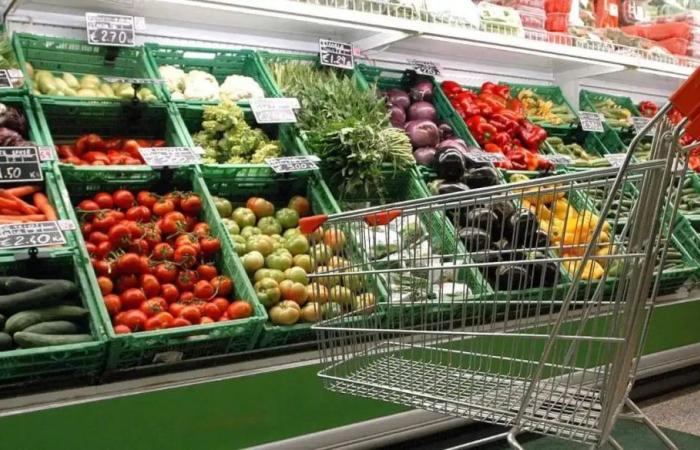
In May, inflation remained stable compared to April, remaining at +0.8%. This stabilization is the main result of reduction in pressure on the prices of processed food goods, which fell from +2.5% in April to +1.8% in May. Similarly, some services, including those related to transportation and housing, contributed to this trend. These data emerge from the monthly Istat report on consumer prices in Italy.
These factors counterbalanced the slowdown in deflationary forces in energy sectorwhere prices, although clearly increasing, remain significantly negative (-11.6% compared to -12.1% in April). Furthermore, the annual variation in “shopping cart” prices continued to decrease, going from +2.3% in April to +1.8% in May, while underlying inflation recorded a slight decline, falling from +2.1% to +2.0%.
Spending divisions
The stabilization of inflation in May is also attributable to the deflation recorded in the Housing, water, electricity and fuel categories, which went from reduction of 9.0% to 9.5%. Furthermore, a deceleration in prices was observed in the sectors of food products and non-alcoholic beverages, which fell from +2.5% in April to +2.0%, as well as in the sectors of alcoholic beverages and tobacco (which went from +2.7 % to +2.2%), Furniture, household items and services (reduced from +1.0% to +0.7%), and Clothing and footwear (from 1.5% to 1.2% ).
On the other hand, some sectors have contributed to increasing inflation, as demonstrated by theincrease in transport prices, rose from +2.0% to +2.5%, and in the Recreation, entertainment and culture sectors, which went from 0.8% to 1.5%.
Analyzing the composition of the inflation rate through the contributions of the individual subcomponents, we note that the increase in prices of Accommodation and catering services (+0.538 percentage points), Food products and non-alcoholic drinks (+0.359 percentage points) and Transport (+ 0.354 percentage points) contributed positively to overall inflation.
On the contrary, a significant negative contribution was recorded from the prices of Housing, water, electricity and fuel (-1.051 percentage points), while the contribution of the Communications division was more limited (-0.132 percentage points).
The shopping cart drops: from +2.3% to +1.8%
In May, the stability of inflation is mainly supported by the widening of the deflation in the prices of goods, which fell from -0.6% to -0.9% on an annual basis, and by the stable growth in prices of Services (+2.9%). The inflationary differential between Services and Goods therefore widened to +3.8 percentage points, compared to +3.5 in the previous month.
In detail of goods, the price trend of food goods recorded a deceleration, in particular for processed foods (the so-called “shopping cart”), past from +2.5% to +1.8% on an annual basis (with a decrease of 0.2% on a monthly basis). On the contrary, unprocessed food prices remained stable at +2.2% on an annual basis, with an increase of 1.4% compared to the previous month, due to the acceleration in prices of fresh and chilled fruit (+6, 2% on an annual basis, +6.1% on a monthly basis) and to the slowdown in the prices of fresh or chilled vegetables other than potatoes (no trend change, +1.1% on a monthly basis).
Moving on to Energy goodsdeflation was less pronounced in May, with a price reduction from -12.1% to -11.6% compared to the previous year (with a decrease of 0.9% on a monthly basis). In particular, Non-Regulated Energy Goods showed a slight increase, settling at -13.5% (from -13.9% in April, with a decrease of 1.1% on a monthly basis). This was influenced by the prices of heating oil (+4.4% on an annual basis, -1.7% compared to April), of Diesel for transport vehicles (+4.9% on an annual basis, -2.5% compared to the previous month) and of Petrol (+3.8% on an annual basis, -0.6% compared to April).
Electricity prices in the free market remained stable at -31.2% on an annual basis (with a decrease of 1.9% on a monthly basis), while city gas and natural gas prices on the free market increased. recorded a marked decline, going from -33.1% to -35.9% on an annual basis (with a decrease of 0.2% compared to April).
Inflation data in the Italian regions
In May, inflation in the five divisions of the national territory presents a differentiated picture: the North-East and the Center show stability in growth rates, while there is a slight deceleration in the other divisions. In particular, the percentage trend on an annual basis stands at +1.0% in both the North-East and the Centre, figures higher than the national average. On the contrary, in the Islands inflation fell to +0.7% compared to the 0.8% recorded in April, while in the South it remained stable at +0.8%. In the North-West there was a decline to +0.6%, confirming a trend of price moderation in that region.
- Veneto: 1.3%
- Tuscany: 1.1%
- Sardinia: 1.0%
- Campania: 0.9%
- Friuli-Venezia Giulia: 0.9%
- Umbria: 0.9%
- Emilia-Romagna: 0.9%
- Lazio: 0.9%
- Lombardy: 0.8%
- Calabria: 0.8%
- Sicily: 0.7%
- Brands: 0.5%
- Trentino-Alto Adige: 0.5%
- Liguria: 0.5%
- Puglia: 0.4%
- Piedmont: 0.4%
- Basilicata: 0.3%
- Abruzzo: 0%
- Molise: -0.4%
- Valle d’Aosta: -0.6%
In the regional capitals, autonomous provinces and in municipalities that are not regional capitals with more than 150 thousand inhabitants, the highest inflation in May was recorded in Rimini and Parma, both at +1.6%, and in Cagliari, at +1, 5%. On the contrary, negative trend changes are highlighted in Ancona (-0.2%), Campobasso (-0.5%) and Aosta (-0.6%).
A C: “+161 euros just for eating and drinking for a couple with 2 children“
“Prices continue their rise. In just one month, even though prices are now lunar, they rise by 0.2%, double compared to April. The worst news is that food products and non-alcoholic drinks, i.e. compulsory expenses by definition, which a month ago had recorded zero economic change, now not only start to grow again but fly by 0.5% in just one month. This is very bad news for those who are already struggling to make it to the end of the month” says Massimiliano Dona, president of the National Consumers Union.
“For a couple with two children, the trend inflation of 0.8% means, despite the savings on housing and electricity equal to 438 euros, an increase in the cost of living equal to 76 euros on an annual basis, even if well 161 euros are only needed to cope with the 2% price increases for food products and non-alcoholic drinks. For a couple with 1 child, the additional annual expense is 36 euros, but 146 euros more are needed for eating and drinking. The record goes to large families with more than 3 children with an increase of 191 euros just to feed and quench their thirst” concludes Dona.





